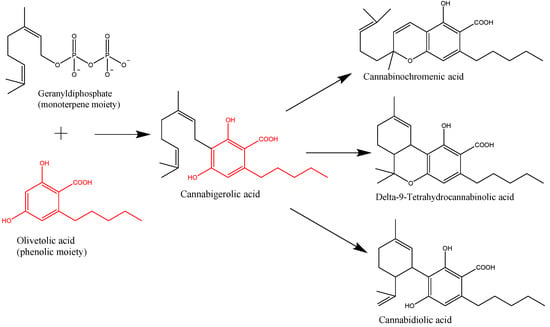 “Cannabinoids have been known as the primary component of cannabis for decades, but the characterization of the endocannabinoid system (ECS) in the 1990s opened the doors for cannabis’ use in modern medicine.
“Cannabinoids have been known as the primary component of cannabis for decades, but the characterization of the endocannabinoid system (ECS) in the 1990s opened the doors for cannabis’ use in modern medicine.
The 2 main receptors of this system, cannabinoid receptors 1 and 2, are found on cells of various tissues, with significant expression in the gastrointestinal (GI) tract. The characterization of the ECS also heralded the understanding of endocannabinoids, naturally occurring compounds synthesized in the human body.
Although research on the effects of both endogenous and exogenous cannabinoids has been slow due to the complicated legal history of cannabis, discoveries of cannabinoids‘ treatment potential have been found in various fields of medicine, including the GI world.
Medical cannabis has since been offered as a treatment for a myriad of conditions and malignancies, including cancer, human immunodeficiency virus/acquired immunodeficiency syndrome, multiple sclerosis, chronic pain, nausea, posttraumatic stress disorder, amyotrophic lateral sclerosis, cachexia, glaucoma, and epilepsy.
This article hopes to create an overview of current research on cannabinoids and the ECS, detail the potential advantages and pitfalls of their use in GI diseases, and explore possible future developments in this field.”
https://www.ncbi.nlm.nih.gov/pubmed/31789770
https://insights.ovid.com/crossref?an=00004836-900000000-97668
 “This observational study examined the acute cognitive effects of cannabis.
“This observational study examined the acute cognitive effects of cannabis.

 “Peripheral neuropathy can significantly impact the quality of life for those who are affected, as therapies from the current treatment algorithm often fail to deliver adequate symptom relief. There has, however, been an increasing body of evidence for the use of cannabinoids in the treatment of chronic, noncancer pain. The efficacy of a topically delivered
“Peripheral neuropathy can significantly impact the quality of life for those who are affected, as therapies from the current treatment algorithm often fail to deliver adequate symptom relief. There has, however, been an increasing body of evidence for the use of cannabinoids in the treatment of chronic, noncancer pain. The efficacy of a topically delivered  “Accumulated evidence indicates that
“Accumulated evidence indicates that  “Medical cannabis use is an emerging topic of interest in orthopedics. Although there is a large amount of literature on medical cannabis use for managing various types of pain, few studies have focused on orthopedic conditions. There is little high-quality evidence in core orthopedic areas. The objective of this study was to summarize the literature on the efficacy of cannabis use for pain related to orthopedic conditions.
“Medical cannabis use is an emerging topic of interest in orthopedics. Although there is a large amount of literature on medical cannabis use for managing various types of pain, few studies have focused on orthopedic conditions. There is little high-quality evidence in core orthopedic areas. The objective of this study was to summarize the literature on the efficacy of cannabis use for pain related to orthopedic conditions. “In Italy, medical grade cannabis (MGC) can be prescribed for different medical conditions, including drug-resistant epilepsy (DRE), once standard and approved therapies have failed, or caused non-tolerable side effects.
“In Italy, medical grade cannabis (MGC) can be prescribed for different medical conditions, including drug-resistant epilepsy (DRE), once standard and approved therapies have failed, or caused non-tolerable side effects. “The purpose of this study is to gain a greater understanding of cancer survivors’ attitudes, perspectives, and concerns about medical cannabinoids (MCs) for cancer symptom and side effect management.
“The purpose of this study is to gain a greater understanding of cancer survivors’ attitudes, perspectives, and concerns about medical cannabinoids (MCs) for cancer symptom and side effect management. “Cannabis sativa L. is a plant long used for its textile fibers, seed oil, and oleoresin with medicinal and psychoactive properties. It is the main source of phytocannabinoids, with over 100 compounds detected so far. In recent years, a lot of attention has been given to the main phytochemicals present in Cannabis sativa L., namely,
“Cannabis sativa L. is a plant long used for its textile fibers, seed oil, and oleoresin with medicinal and psychoactive properties. It is the main source of phytocannabinoids, with over 100 compounds detected so far. In recent years, a lot of attention has been given to the main phytochemicals present in Cannabis sativa L., namely, 
 “The monocyclic 1,4-benzoquinone, HU-331, the direct oxidation product of
“The monocyclic 1,4-benzoquinone, HU-331, the direct oxidation product of  “Drug-resistant seizures are life-threatening and contribute to sustained hospitalization.
“Drug-resistant seizures are life-threatening and contribute to sustained hospitalization.